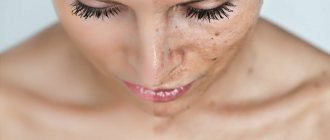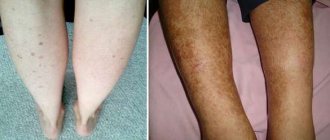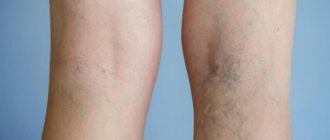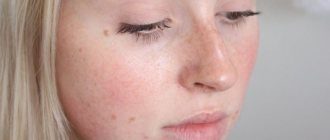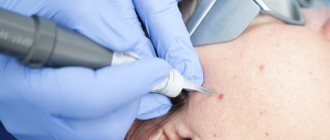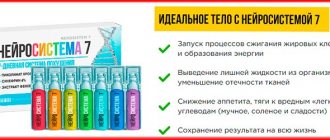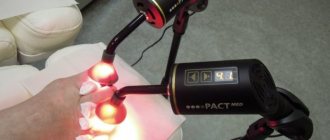Every person, and especially the fairer sex, wants the skin on their face to look young, healthy, not shiny with fat and, of course, without pimples, blackheads and other cosmetic defects. Those who take care of their skin usually achieve such results. But it also happens that, despite all efforts, small whitish formations appear on the face, similar to millet grains. They are called milia. How to get rid of them forever? Can I do this myself or do I need to contact a specialist? Are these “grains” dangerous and what causes their appearance? Let's figure it out.
Harmless milia
It happens that whitish nodules appear on the face, less often on the chest, shoulders, genitals, and arms. They don't cause any problems other than looking unpleasant. This cosmetic defect has several synonyms. So, for its external, although distant similarity with millet grains, it is called millet. According to the pathology of occurrence and development, this is a white eel. In medicine you can find the term “closed comedon”, which is one of the types of cysts. In cosmetology, these same formations on the skin are called milia. How to get rid of them so as not to harm the skin and not get a purulent wound or a rough scar in return for a harmless, absolutely painless, barely noticeable bump? Some people think that since milia do not cause trouble, they are not dangerous, and they try to squeeze them out on their own. The result of such “treatment” in most cases is inflammation, suppuration, injury to adjacent areas of the skin and, finally, a scar. It turns out that they are not so harmless, these tiny white tubercles.
Pathogenesis
At its core, milium is a small cyst formed in the area of the hair follicle when it is blocked by desquamated epithelium. Usually, the sebum secreted by the sebaceous glands comes to the surface of the skin. Since the blockage prevents its release, it begins to accumulate, forming whitish, rather dense papules to the touch, which are better visible when the skin is stretched. Their size almost never exceeds 2 mm. In addition to sebum, keratins - dead skin cells - were found in the acne papule. Removing milia by squeezing them out only leads to mechanical damage to adjacent areas of the skin, but the contents of the papule remain intact. Since the papules are closed and have no contact with the outside world, inflammation does not develop in them. They can be present on human skin for many years without interfering with anything. In rare cases, milia disappear on their own without a trace. But more often they need to be removed with the help of a cosmetologist.
Why do acne appear?
Science cannot yet say with absolute certainty why whitish nodules—milia—appear on human skin. The reasons for this are not very serious, which a person can easily eliminate:
1. Improper skin care. You need to select creams, lotions and other cosmetics that suit your skin type, periodically cleanse your face and, of course, maintain hygiene.
2. Poor nutrition. It is noted that the presence of a large amount of fatty foods, smoked foods and sweets in the diet is a good incentive for the appearance of whiteheads.
3. Use of low-quality cosmetics (powder, cream-powder, etc.) or excessive use of any facial cosmetics.
Unfortunately, the most common nuisance is milia, the causes of which are much more serious:
1. Hereditary predisposition. It has been established that if parents have milia on their bodies, they can be expected in their children.
2. Hormonal disorders. The formation of the body occurs in adolescence and young adulthood. It is at this stage that the greatest appearance of milia is noted, which can disappear on their own by about 30 years.
3. Diseases of the thyroid gland, pancreas, and gastrointestinal tract.
4. Metabolic disorders.
5. Failure of the apoptosis process (removal of used cells by the body).
General information
Milia are compacted subcutaneous formations in the form of white or yellow nodules with clear edges that rise above the skin. They range in size from half a millimeter to two to three millimeters, and are localized separately or in groups without merging.
If they are very close to each other, then the skin surface becomes rougher, and countless furrows appear, separating different groups of nodules. After some time, milia go away on their own - as a result of the natural replacement of skin layers, and can persist for many years.
Structure of the neoplasm
Histological examination confirms that retention cysts are located in the skin regardless of the hair follicles, sweat and sebaceous glands and their ducts. They are a cystic wall consisting of epithelial cells.
The capsule contains layered bulb-shaped accumulations of keratin (keratinized epithelial cells), and not the secretion of the sebaceous gland. Fat is mixed into the total mass a little at a time.
It is assumed that they are formed as a result of hyperkeratosis, when rapid fragmentation of cells in the upper layer occurs while the desquamation process slows down at the same time.
When trying to squeeze it out, everything was unsuccessful. Very rarely, when a cystic formation is punctured, a very small volume of white, soft or jelly-like contents is released.
Reasons for education
It’s still stupid to say anything with 100% certainty.
- primary - a defect in the evolution of skin layers;
- secondary - Balser's pseudomilium - in places where scars form after injury to the skin during the inflammatory process, burn.
Main contributing factors:
- heredity;
— failure of the hormonal system during the transition period, menopause, endocrine imbalance and illness;
— the metabolic process is disrupted;
- incorrect approach to diet, diseases of the digestive system, leading to an imbalance of vitamins in the body, namely vitamin A deficiency;
— unqualified choice of cosmetics for skin care;
- excessive exposure to the scorching rays of the sun.
Getting rid of acne on your own
Many people do not consider the removal of milia something special and resort to the advice of healers. Indeed, home cosmetology is an excellent prevention against the appearance of new rashes.
But if milia signal a disease of the internal organs, only specialists will help. Some citizens, trying to save money on visiting a cosmetologist and absolutely confident in their abilities, pierce milia papules with a needle at home and squeeze out their contents. What dangers lie in wait here? Firstly, if 100% sterility of the needle, hands, and skin has not been ensured, an infection will certainly develop in the wound, which will only worsen the situation. Secondly, you need to take into account that the removal of milia in a cosmetology office is carried out with special tools, and an ordinary household needle will almost certainly damage the follicle tissue, which can cause any negative process, even the appearance of a keloid. Thirdly, it is difficult for a non-specialist to control whether excess fat and horny scales remain in the cyst after a puncture. Incomplete removal of the blockage together with the wound from the needle leads to inflammatory processes, that is, after the procedure, the appearance of the face will become worse than before it. Therefore, it is better not to experiment with a needle at home.
Primary sources of problems
Before going to the beauty salon, potential patients are asked to understand the reasons for the prosyanka. There are many factors for its occurrence, so several aspects often provoke a surge in a peculiar release of sebum.
Among the most common sources of the disease is excessive use of decorative cosmetics.
Moreover, it is not even so important how high quality the product turned out to be. It’s just that when the sebaceous glands are clogged with a thick layer of powder, foundation or any other tinting agent, the pores of the skin stop working normally.
Also, the reasons for unsightly covering the face with small wen are:
- incorrect functioning of some internal organs;
- improper diet;
- excessive use of thermal procedures.
The first point of the program affects malfunctions not only of the gastrointestinal tract, but also of the pancreas and liver. Either one body or all at once may cease to perform its duties. In this situation, trying to excise the tubercles with a laser will be a futile exercise. You will have to start treatment from the inside to remove the barrier to glowing, beautiful skin.
Abuse of junk food becomes a direct path to obesity. The deposition of excess sebum in milia works on an identical principle. When the daily menu contains an abundance of excessively salty, sweet, fried or smoked food, this will quickly affect a person’s appearance.
Tanning is no less dangerous. Moreover, we are talking not only about visiting a solarium, but also about a long stay on the beach during the hottest hours.
In adolescents and middle-aged women, hormonal changes become the primary source of difficulties. An equally common cause is toxic poisoning of the body from within, which occurs with prolonged methodical accumulation of toxins. Bad habits such as drinking alcoholic beverages and smoking also add to the risk of being affected by fat “grains”. People who suffer from increased dryness of the skin of the face should be especially careful. But the most important pillar for the development of lesions is insufficient skin hygiene. This applies to both the inability to choose normal skincare products and the habit of not washing off makeup before bed.
Folk recipes
If piercing acne on your own is dangerous, then removing milia on the face using masks, rubbing, and compresses is only beneficial, since all these procedures significantly improve the condition of the skin. Viburnum juice gives good results. To do this, wash fresh berries, squeeze the juice out of them and wipe problem areas of the skin with it. Another tip from healers to prevent whiteheads is to wipe your face with fresh cucumber.
1. Soft peeling with salt. Mix fine salt and olive oil 1:1. This composition is applied to the face, while lightly rubbing it into the skin. Leave for 5 minutes and rinse with clean water.
2. Viburnum mask. Grind rolled oats, mix it with viburnum juice to form a cream, apply to the face. After 45 minutes, carefully wash off.
3. Herbal decoctions. Chamomile, string, calendula are suitable. Use sponges soaked in the broth to regularly wipe problem areas of the skin.
4. White paraffin. Before the procedure, you need to wipe your face with any alcohol solution. Melted but not hot paraffin is applied to the prepared skin in thin layers, waiting until each layer hardens. When the mask becomes cold, carefully remove it.
Mechanical removal
In order to get rid of rashes, you need to consult a dermatologist or cosmetologist.
A few years ago, curettage was very popular. This is a mechanical method of removing milia on the face and body. Its essence is as follows: a specialist thoroughly cleanses the skin, disinfects it, and then pierces the acne with a sterile needle and removes its contents with an instrument (curette). Upon completion of the procedure, wounds remain on the area that require care for several days. If you follow all the doctor's recommendations, the healing process will be very fast.
The disadvantage of this method of removing milia is that you can get rid of a maximum of 10 blackheads in one session. If this condition is ignored, the functioning of the sebaceous glands may be disrupted and the risk of injury to the skin increases.
Milia of newborns
Quite often, multiple small white nodules appear on the delicate skin of babies. They can be on the nose, cheeks, forehead, on the nasolabial triangle, sometimes on the arms and legs or on the child’s lips. There is no reason for concern here, it’s just that the baby’s digestion process has not yet normalized, his gastrointestinal tract is weak, and his hormonal background has its own characteristics. Removing milia from children by any means is strictly prohibited. The only thing parents should do is to ensure that the child’s skin is always perfectly clean. As a rule, acne goes away on its own after a few months, leaving no traces.
Removing milia on the eyelid
Everyone knows how delicate and thin the skin of the eyelids is and how dangerous any mechanical impact in the eye area is for vision. Here you need to work with any rashes especially carefully, choosing the most gentle methods. Therefore, the removal of milia on the eyelid should be entrusted exclusively to specialists. In addition to cosmetologists, ophthalmologists and dermatologists do this. Most often, a non-contact radio wave scalpel is used for this procedure, after which no traces are left. Laser removal of milia is also used. If blackheads are located close to the surface of the skin, they are removed with light peeling.
How to get rid of milia?
Today, the “gold standard” is CO-2 laser removal of milia
Benefits of laser milia removal:
- no direct contact with skin
- bloodless aseptic method
- high-precision impact
- does not affect healthy tissue
- effectiveness of the method
- excellent cosmetic result
At the Gradient clinic, milia removal is performed by experienced dermato-oncologist surgeons. The doctor will carefully examine the formations, make sure of their origin, carefully remove them and prescribe subsequent skin care at the sites of removal.
Ways to remove milia
In beauty salons they help get rid of whiteheads without complications or relapses. The following methods are used for this:
1. Mechanical, the most common. The doctor treats the problem area of skin with an antiseptic, punctures the milia and extracts its contents. The wound must be disinfected. In one session you can remove no more than 10 blackheads.
2. Electrocoagulation. This method is used to remove milia on the face, eyelids, and genitals. The essence of the procedure is to cauterize acne papules with alternating high-frequency current. The process may produce an unpleasant smell of burnt skin. After this, a crust appears, which does not bother you at all and disappears on its own after a couple of days. In order for it to harden and ripen faster, the areas treated with electrocoagulation should not be moistened with plenty of water and should be treated with an antiseptic every day.
3. Removal of milia with laser. This method differs from the previous one only in the method of influence. After laser treatment of acne, crusts also remain that remain on the skin for several days. Recommendations for care are the same as after electrocoagulation.
4. Curettage. It belongs to a subtype of the mechanical removal method, only in this case it is not a needle that is used, but a special curette. The disadvantage of this method is pain and scars after the procedure.
Cosmetology events
When you decide to deal with a problem in a cosmetologist’s office, the specialist can offer you 3 options for solving the problem: mechanical method, laser removal and electrocoagulation.
Mechanical removal
This method is considered the most effective and popular. The manipulation can only be carried out in a beauty salon. The essence of this technique is that first the skin is thoroughly cleaned, disinfected, and then the formation is removed. To do this, the cosmetologist, using a sterile cosmetic needle, makes a puncture and removes the contents of the milia.
The video explains how to remove milia:
If you perform such a manipulation at home, for example, removing milia from an eyelid, then very often people get an infection, which only aggravates the situation. In this case, an inflammatory process occurs. In addition, it is better to carry out mechanical removal of the defect in a salon, because milia can sometimes take on small sizes, which is not always convenient. Only an experienced cosmetologist can do everything carefully and quickly.
At the end of the manipulation, there are minor wounds on the skin. If all the doctor’s instructions are carried out correctly, all these unpleasant consequences will disappear soon. As a rule, it is quite possible to remove 10 formations in one session. This amount is considered optimal in order not to disrupt the functioning of the sebaceous glands and not to injure the skin too much.
The price of mechanical removal of milia in a salon depends on the number of formations. In order not to come back to the salon again, it is necessary to thoroughly cleanse your face at home. To do this, you need to choose the right cosmetics that help the sebaceous glands work. In addition, proper nutrition plays an important role in this matter. The cost of such a procedure will be 2900-6000 rubles.
You can learn about laser removal of spider veins on the face here.
The video explains how to get rid of milia at home:
Treatment with electrocoagulation
Electrocoagulation of milia is recognized as one of the most popular and sought-after techniques. The essence of electrocoagulation is that the affected areas are cauterized using high-frequency alternating electric current. After using an electrocoagulator, a crust forms on the face, which after a short period of time disappears from the face without a trace. After manipulation, to achieve maximum results, it is necessary to replenish the treatment of the affected areas with antiseptic compounds at home. The cost of electrocoagulation will be 550-1200 rubles.
Remove milia with laser
Milia can also be removed using laser therapy. The essence of the method is to influence the flow of laser beams on the skin. As a result of this process, a crust forms on the face, just as in the previous case. It disappears on its own after 2 weeks. It is important to carry out treatment at home with antiseptic compounds. The cost of the laser procedure will be 350-1000 rubles. Usually, wen and other formations are removed with a laser.
Milia removal: price
The cost of whitehead removal services depends on their size, location and level of the clinic. So, in many cosmetology centers this procedure costs 100 rubles per unit. If the blackheads are too small, the cost may be half the price. However, in expensive, highly popular clinics, such as MasterMed, where they perform many cosmetic procedures, including milia removal, the price of services is slightly higher. Here they will get rid of whiteheads on the face for 500 rubles, on the upper eyelid - for 2000 rubles, on the lower eyelid (eyelash edge) - for 3000 rubles. Which clinic to choose, expensive or cheaper, everyone decides for themselves. To avoid mistakes, you should read customer reviews and be sure to sign up for a preliminary consultation to talk with the doctor.

